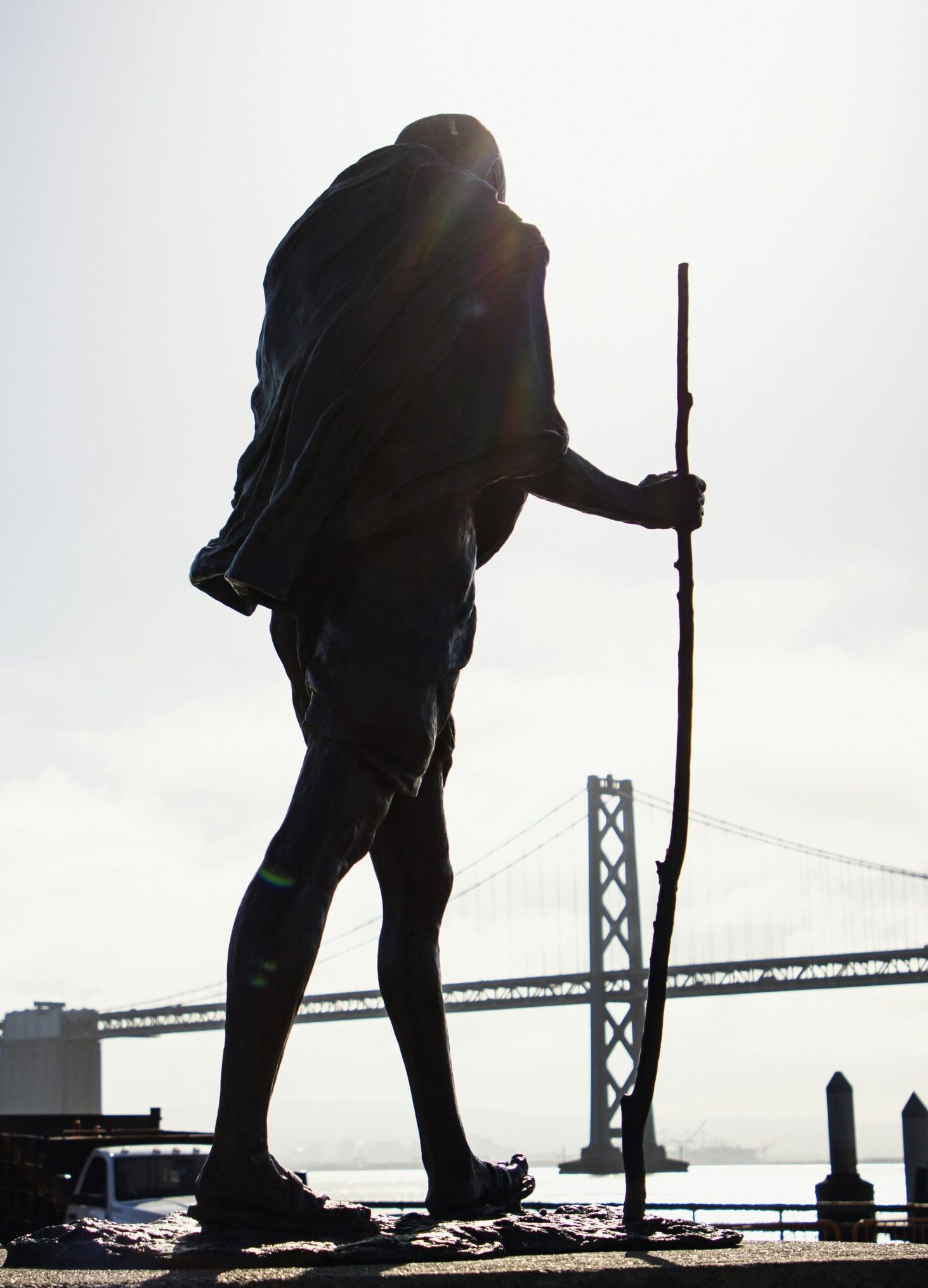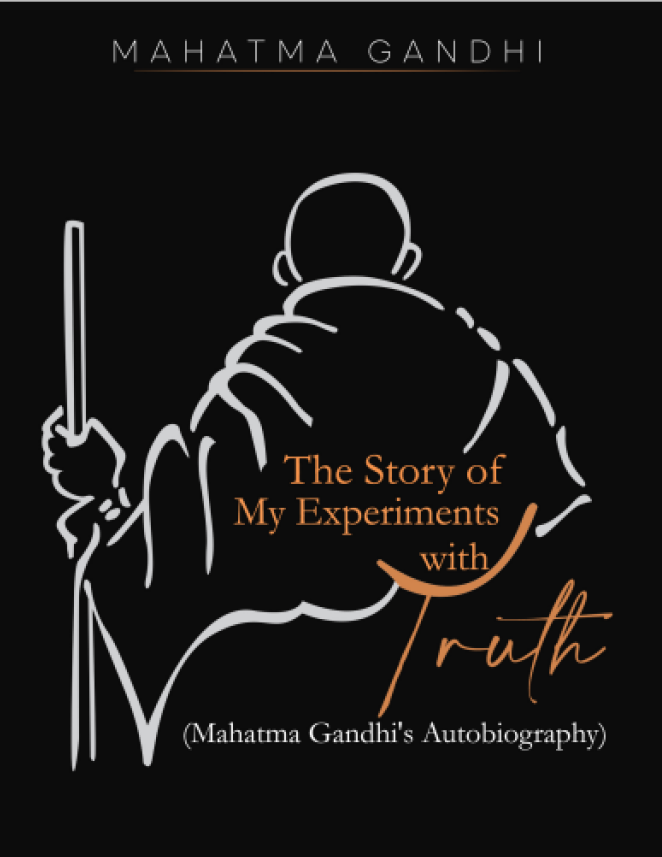Mahatma Gandhi, also known as Mohandas Karamchand Gandhi, was a prominent leader in India’s struggle for independence from British rule. He is widely recognized for his philosophy of non-violence (Ahimsa) and civil disobedience (Satyagraha), which not only played a vital role in India’s freedom struggle but also influenced civil rights and freedom movements across the world. Gandhi’s life was a testament to simplicity, truth, and unwavering dedication to justice and equality.
Early Life and Struggles
Mahatma Gandhi was born on October 2, 1869, in Porbandar, a coastal town in Gujarat, India. He belonged to a modest yet influential family; his father, Karamchand Gandhi, served as the Diwan (Chief Minister) of Porbandar. His mother, Putlibai, was a deeply religious woman who instilled moral values in young Mohandas.
In 1888, Gandhi traveled to London to pursue law at University College London. During this period, he adopted a disciplined lifestyle, adhering to vegetarianism and studying religious texts like the Bhagavad Gita and the Bible.
In 1893, Gandhi moved to South Africa to practice law. His experiences with racial discrimination there, including being thrown off a train for refusing to move from a first-class compartment reserved for whites, became the turning point in his life. He began organizing the Indian community to protest against unjust laws and founded the Natal Indian Congress in 1894, laying the foundation for his philosophy of non-violent resistance.
Historical Timeline and Key Moments
- Return to India (1915): After 21 years in South Africa, Gandhi returned to India and joined the Indian National Congress. He was welcomed as a leader with vast experience in organizing non-violent protests.
- Champaran and Kheda Movements (1917-1918): Gandhi led farmers in Champaran (Bihar) and Kheda (Gujarat) against oppressive taxation and forced cultivation of indigo by the British authorities. His success in securing relief for the peasants established his leadership in India’s freedom struggle.
- Khilafat Movement (1919-1924): Gandhi supported the Muslim community in their fight to preserve the Ottoman Caliphate, aiming to strengthen Hindu-Muslim unity against British rule.
- Non-Cooperation Movement (1920-1922): Gandhi called for the boycott of British goods, institutions, and laws. People resigned from government jobs, students left schools, and Indians began wearing khadi (hand-spun cloth) to promote self-reliance.
- Civil Disobedience Movement and Salt March (1930-1934): Gandhi’s Salt March (March 12 – April 6, 1930) from Sabarmati Ashram to Dandi, where he broke the salt law by making salt from seawater, became a symbolic act of defiance against British monopoly.
- Quit India Movement (1942): During World War II, Gandhi launched the “Quit India Movement” on August 8, 1942, demanding the immediate withdrawal of British forces from India. This movement marked the final push for independence.
- Independence and Partition (1947): India gained independence on August 15, 1947, but Gandhi was heartbroken by the partition of India and Pakistan, which led to communal violence and mass displacement.
- Assassination (January 30, 1948): Gandhi was assassinated in New Delhi by Nathuram Godse, a Hindu extremist who opposed Gandhi’s stance on communal harmony.
Contributions to Society
- Indian Independence Movement: Gandhi’s leadership in the freedom struggle through non-violent civil disobedience united the diverse Indian population against colonial rule.
- Promotion of Non-Violence (Ahimsa): Gandhi’s principle of non-violence inspired global leaders like Martin Luther King Jr., Nelson Mandela, and the Dalai Lama.
- Social Reforms: He fought against untouchability, caste discrimination, and gender inequality, and worked for the upliftment of marginalized communities.
- Economic Self-Sufficiency: Through the Khadi movement, he encouraged Indians to boycott British goods and promote indigenous industries.
- Educational Reforms: Gandhi introduced “Nai Talim” (Basic Education), which integrated manual labor with learning to develop self-reliance and moral character.
Notable Writings
- “Hind Swaraj” (1909): A political pamphlet that critiques Western civilization and advocates for Indian self-rule.
- “My Experiments with Truth” (Autobiography): An honest account of his personal journey, moral struggles, and experiments with truth and non-violence.
- “Constructive Programme” (1941): A guide for nation-building and social reform based on self-reliance and community development.
- Letters and Articles: Published in newspapers like “Young India” and “Harijan,” addressing political strategies, social justice, and ethical living.
Best Thoughts and Teachings
- “Be the change that you wish to see in the world.”
- “An eye for an eye will only make the whole world blind.”
- “The best way to find yourself is to lose yourself in the service of others.”
- “Live as if you were to die tomorrow. Learn as if you were to live forever.”
- “Freedom is not worth having if it does not include the freedom to make mistakes.”
Mahatma Gandhi’s life was a remarkable journey of truth, non-violence, and selfless service. His teachings continue to inspire individuals and movements fighting for justice, equality, and human rights worldwide. From leading India’s struggle for independence to promoting peace and unity, Gandhi’s philosophy remains timeless and relevant in today’s world. For researchers, historians, and social activists, his life serves as a profound example of moral courage and unwavering dedication to humanity.












